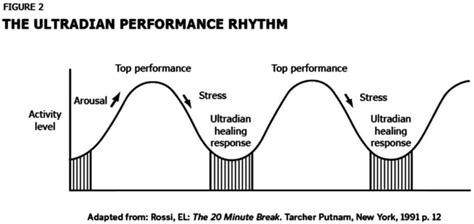How to optimize recovery for peak energy & daily performance?

In the relentless pursuit of fitness and daily productivity, many often overlook a critical component of success: recovery. While intense training and consistent effort are undeniably important, true optimization of energy and performance hinges on how effectively we allow our bodies and minds to recuperate. Recovery isn’t merely a passive state of rest; it’s an active, multi-faceted process essential for repairing tissues, replenishing energy stores, reducing inflammation, and sharpening mental clarity. By strategically integrating recovery practices into your routine, you can unlock a higher level of sustained energy, enhanced physical capabilities, and improved overall well-being.
The Foundation of Recovery: Prioritizing Quality Sleep
Nothing impacts your body’s ability to recover and perform more profoundly than sleep. During deep sleep cycles, your body repairs muscle tissue, consolidates memories, releases growth hormones, and replenishes glycogen stores. Chronic sleep deprivation can lead to decreased physical performance, impaired cognitive function, weakened immune response, and increased injury risk.
- Aim for 7-9 Hours: Most adults need this range, though individual needs may vary.
- Establish a Routine: Go to bed and wake up at consistent times, even on weekends.
- Optimize Your Environment: Ensure your bedroom is dark, quiet, and cool.
- Limit Screens Before Bed: Blue light emitted from devices can disrupt melatonin production.
- Avoid Caffeine and Heavy Meals: Especially close to bedtime.

Fueling Your Recovery: Strategic Nutrition & Hydration
What you put into your body directly influences its ability to repair, rebuild, and refuel. Proper nutrition is paramount for post-exercise recovery and maintaining high energy levels throughout the day.
- Post-Workout Nutrition: Consume a mix of protein and carbohydrates within 30-60 minutes after intense exercise. Protein aids muscle repair, while carbs replenish glycogen.
- Balanced Macronutrients: Ensure your diet includes adequate protein, healthy fats, and complex carbohydrates to support overall health and energy.
- Micronutrient Power: Don’t overlook vitamins and minerals, found abundantly in fruits, vegetables, and whole grains, which play crucial roles in metabolic processes and immune function.
- Stay Hydrated: Water is essential for every bodily function, including nutrient transport, temperature regulation, and joint lubrication. Drink water consistently throughout the day, increasing intake during and after exercise.

Active Recovery & Mobility: Gentle Movement for Greater Gains
While complete rest days are vital, active recovery days can significantly enhance the healing process. Light activities increase blood flow without adding undue stress, helping to flush out metabolic waste products and deliver fresh nutrients to muscles.
- Light Aerobics: Walking, cycling, or swimming at a low intensity.
- Stretching & Foam Rolling: Improve flexibility, range of motion, and reduce muscle soreness and stiffness.
- Yoga or Pilates: Enhance body awareness, core strength, and flexibility, while also promoting relaxation.

The Mind-Body Connection: Mastering Stress for Better Recovery
Mental and emotional stress can be just as detrimental to recovery as physical exertion. Chronic stress elevates cortisol levels, which can hinder muscle repair, increase inflammation, and disrupt sleep patterns. Effective stress management is a non-negotiable component of optimal recovery.
- Mindfulness & Meditation: Practice daily meditation or mindfulness exercises to calm the nervous system.
- Deep Breathing Techniques: Simple breathing exercises can quickly reduce stress and promote relaxation.
- Hobbies & Downtime: Engage in activities you enjoy and schedule dedicated periods for relaxation away from work or intense training.
- Connect with Others: Social interaction and support can significantly reduce feelings of stress.

Listening to Your Body: The Art of Intuitive Recovery
Ultimately, recovery is highly individualized. What works for one person might not work for another, and your needs will change based on your training intensity, life stress, and overall health. Learning to listen to your body’s signals is crucial for preventing overtraining and burnout.
- Monitor Energy Levels: Pay attention to persistent fatigue or a lack of motivation.
- Track Performance: A sudden dip in performance despite consistent training can signal insufficient recovery.
- Recognize Overtraining Symptoms: These include prolonged soreness, increased irritability, restless sleep, and frequent illness.
- Incorporate Deload Weeks: Periodically reduce training volume and intensity to allow for deeper recovery and adaptation.
Optimizing recovery is not a luxury; it’s a fundamental requirement for anyone aspiring to achieve peak energy and sustained daily performance. By consciously integrating adequate sleep, strategic nutrition, active recovery, and effective stress management into your lifestyle, you transform recovery from an afterthought into a powerful tool. Embrace these principles, listen to your body, and unlock a reservoir of energy and resilience that will propel you towards your highest potential, both in fitness and in life.







